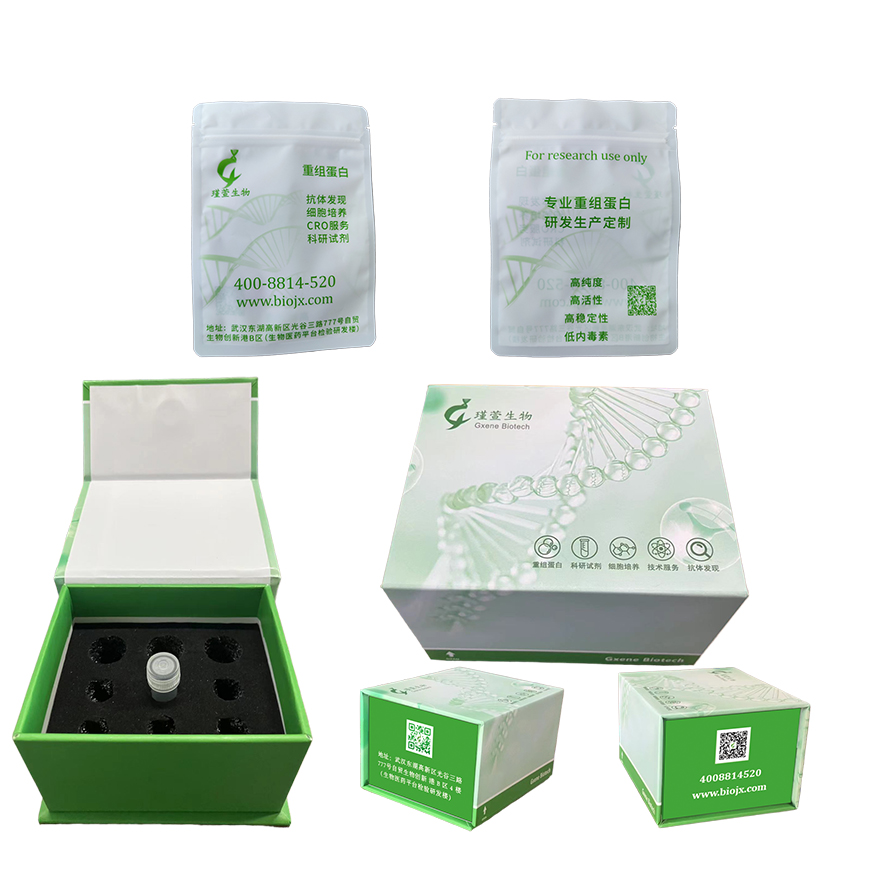研究方向
DR6/TNFRSF21 蛋白在促进细胞凋亡方面具有多种作用,包括激活 NF-kappa-B 以及 BAX 和线粒体释放的细胞色素 c 介导的细胞凋亡。它参与淀粉样肽引发的神经元凋亡,导致细胞体死亡和轴突修剪。此外,它还对少突胶质细胞的存活、成熟和髓鞘形成产生负面调节。该蛋白还在 T 细胞信号传导、适应性免疫反应以及 T 细胞分化和增殖的调节中发挥着至关重要的作用。它抑制 T 细胞反应和细胞因子的释放,以及响应抗原而产生 IgG、IgM 和 IgM。此外,它还充当细胞焦亡的调节剂,在活性氧 (ROS) 刺激和氧化时招募 CASP8,从而导致 GSDMC 激活。DR6/TNFRSF21 蛋白与 NGFR、CASP8 和 N-APP 相互作用,并与 TRADD 结合。
After reconstitution, the protein solution is stable at -20℃ for 3 months, at 2-8℃ for up to 1 week.未开盖的干粉蛋白在 -20°C至-80°C可保存12个月;
复溶之后,蛋白溶液在-20°C及以下可保存3个月,在2-8℃可保存1周。
背景信息
Tumor necrosis factor receptor superfamily member 21 (TNFRSF21) is also known as death receptor 6 (DR6), which is a member of the TNF-receptor superfamily.This type I transmembrane receptor possesses four extracellular cysteine-rich motifs and a cytoplasmic death domain. DR6 is an extensively posttranslationally modified transmembrane protein and that N- and O-glycosylations of amino acids in its extracellular part. DR6 interacts with the adaptor protein TRADD and mediates signal transduction through its death domain, and expression of DR6 in mammalian cells induces activation of both NF-kappaB and JNK and cell apoptosis. DR6 knockout mice have enhanced CD4+ T cell proliferation and Th2 cytokine production, suggested that DR6 serves as an important regulatory molecule in T-helper cell activation, and is involved in inflammation and immune regulation. DR6 is expressed ubiquitously with high expression in lymphoid organs, heart, brain and pancreas. Some tumor cells overexpress DR6, typically in conjunction with elevated anti-apoptosis molecules. DR6 may also be involved in tumor cell survival and immune evasion, which is subject to future investigations.

